In modern homes and commercial buildings, aluminum alloy doors and windows are highly favored for their durability, sleek aesthetics, and excellent performance. They are not just entry points but key elements that connect indoor and outdoor spaces and define style. Today, we will delve into three mainstream types of aluminum alloy doors: Swing Doors, Sliding Doors, and Folding Doors, to help you make an informed choice based on your needs.
1. Aluminum Alloy Swing Doors
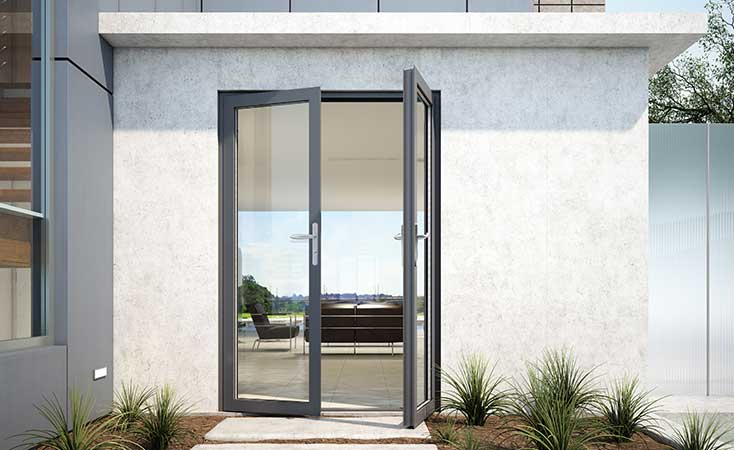
Swing hinged doors, as a traditional classic style, are suitable for both commercial and residential settings. Renowned for their durability, they facilitate easy indoor disassembly and provide enhanced security.
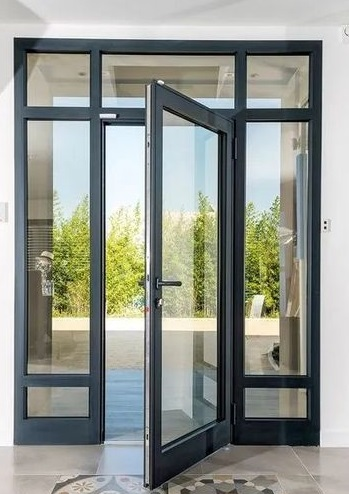
Advantages:
Excellent Sealing: When closed, the door leaf fits tightly against the frame, offering the best air tightness, water tightness, and thermal and acoustic insulation among the three types.
Simple Structure, Long-Lasting: The hardware mechanism is simple, resulting in a relatively low failure rate.
High Security: Multi-point locking systems can provide very high security.
Disadvantages:
Requires Swing Space: Needs to reserve a fan-shaped area for the door to swing open, making it unsuitable for narrow passages or entrances.
Limited Opening Size: Usually not made in very large sizes, as an overly heavy door leaf can affect the hardware’s lifespan
Ideal For: Bedrooms, studies, balcony doors, main entrances – spaces that require high sealing and sound insulation.
2. Aluminum Alloy Sliding Doors
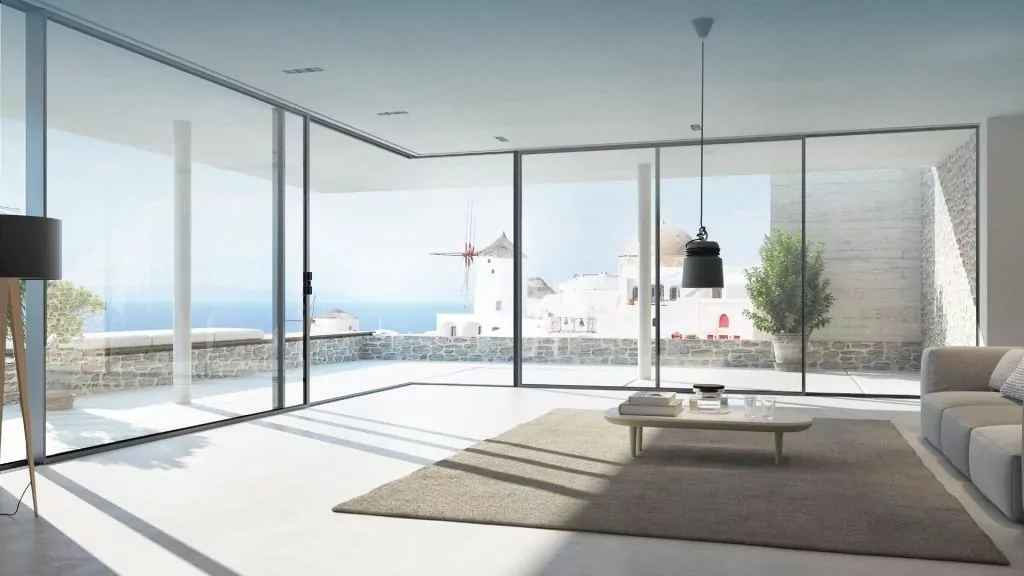
Sliding doors move horizontally left and right on tracks via rollers, not occupying any additional indoor or outdoor space when opening.
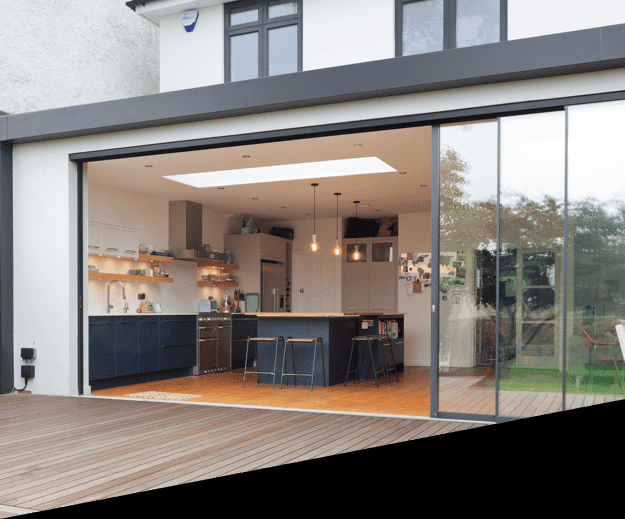
Advantages:
Space-Saving: This is its biggest advantage, ideal for small apartments or space-constrained areas.
Broad Views: Often designed with large fixed glass panels and a movable leaf, providing excellent lighting and viewing effects.
Flexible Operation: Easy and smooth to operate, allowing control over the opening degree.
Disadvantages:
Slightly Inferior Sealing: Gaps exist between the door leaf and the track, so air tightness and thermal insulation are generally not as good as swing doors.
Track Prone to Dirt: The ground track can easily accumulate dust and debris, requiring regular cleaning.
Only Half Can Open at Once: Typically, only up to 50% of the doorway can be open at the same time.
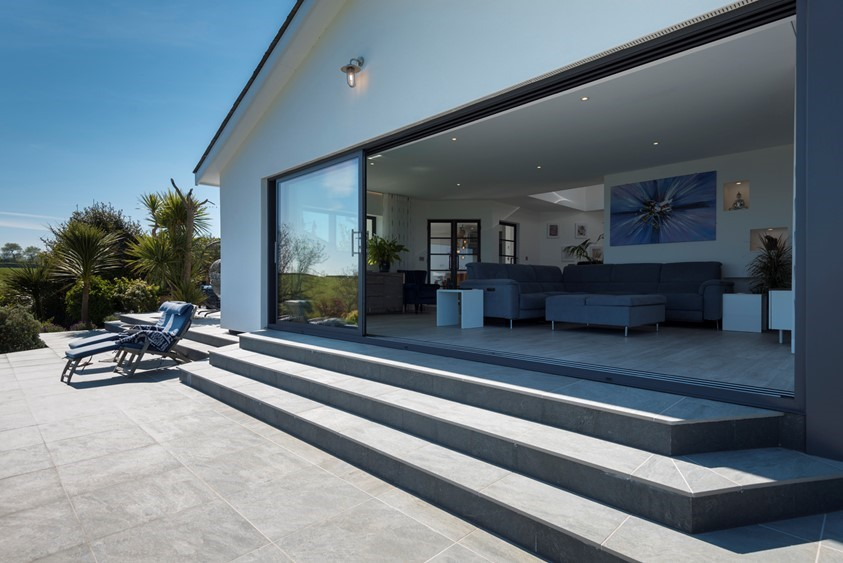
Ideal For: Balconies, kitchen partitions, walk-in closets, living and dining rooms where maximizing the view is desired.
3. Aluminum Alloy Folding Doors
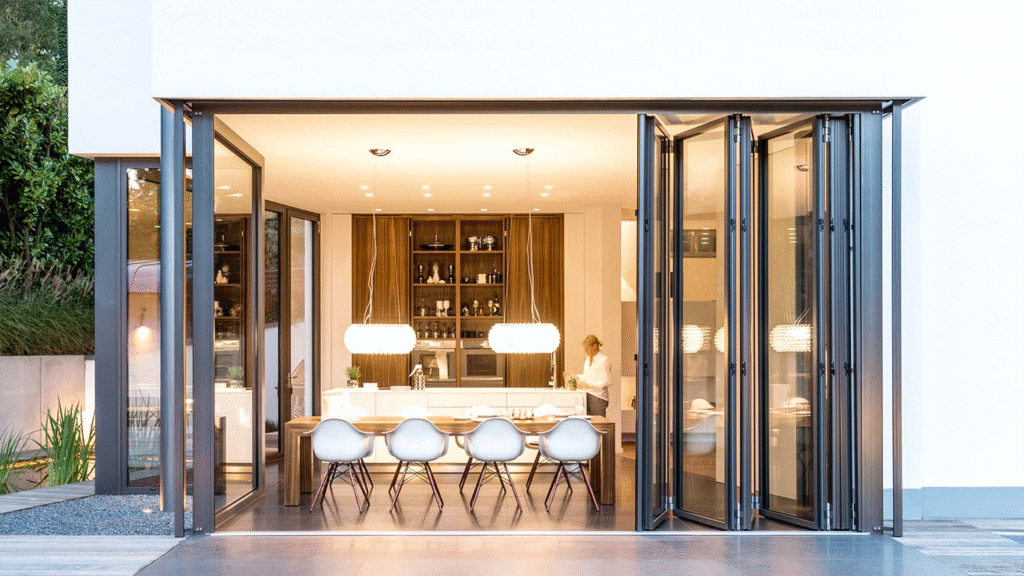
Folding doors consist of multiple leaves connected by hinges. When opened, the leaves fold and stack to one or both sides, achieving a fully or partially open space.
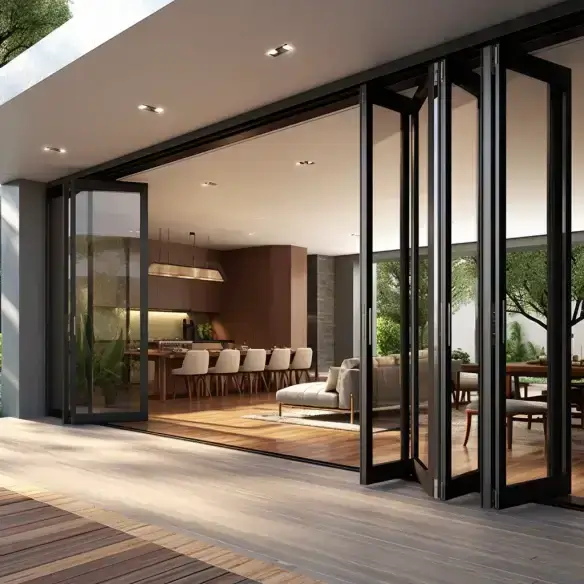
Advantages:
Ultimate Openness: Highest opening rate, up to over 90%, completely blurring the line between indoor and outdoor, creating a fluid spatial experience.
Flexible and Transparent: Can be partially or fully opened as needed, offering great flexibility.
Modern Aesthetics: When fully open, it resembles a glass wall, creating a stunning and modern visual effect.
Disadvantages:
Relatively Weakest Sealing: With multiple seams between leaves, the sealing performance is the weakest among the three types.
Complex Structure, Higher Cost: More and complex hardware (hinges, tracks, rollers) is required, demanding high quality and precise installation, usually at a higher price.
Requires Maintenance: The complex hardware may require more daily maintenance to ensure smooth operation.
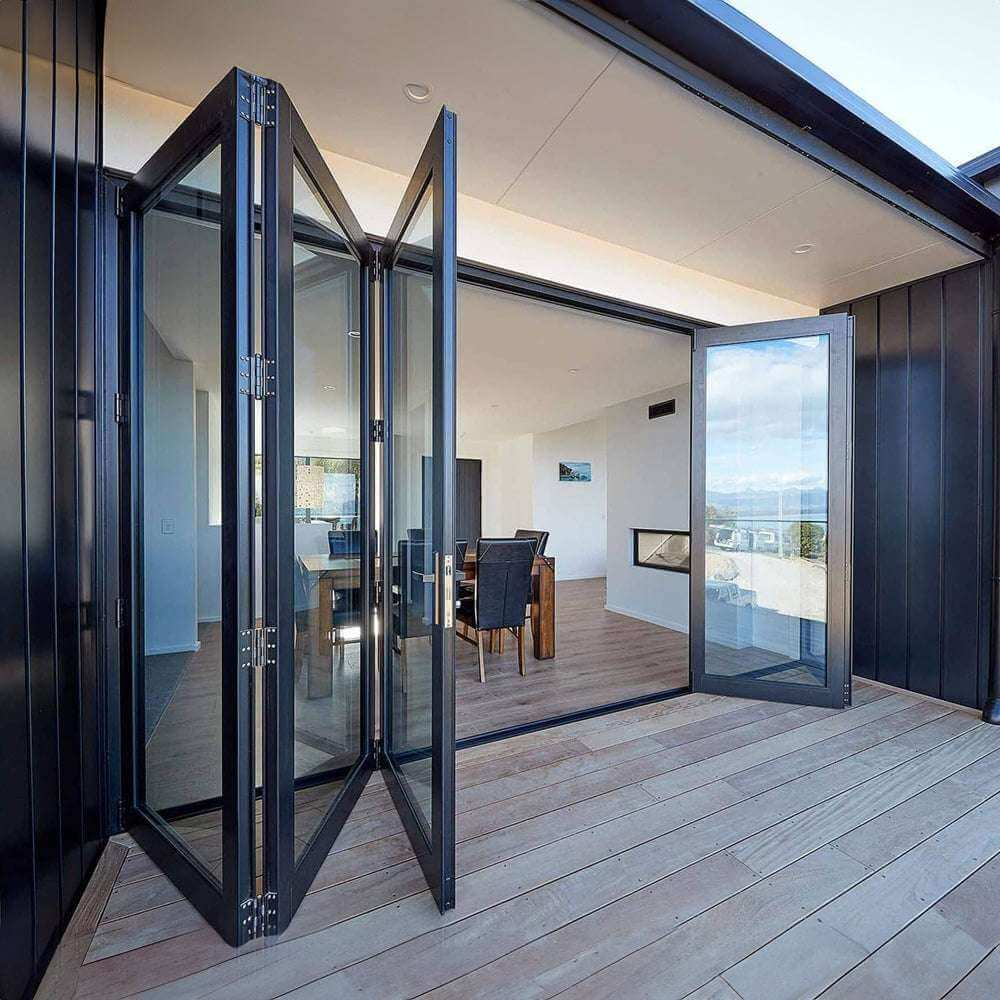
Ideal For: Balconies, terraces, connections between dining areas and gardens, large open-plan spaces that require complete openness.
We hope this guide helps you find the perfect door for your home, allowing light, breeze, and scenery to blend seamlessly into your life.
